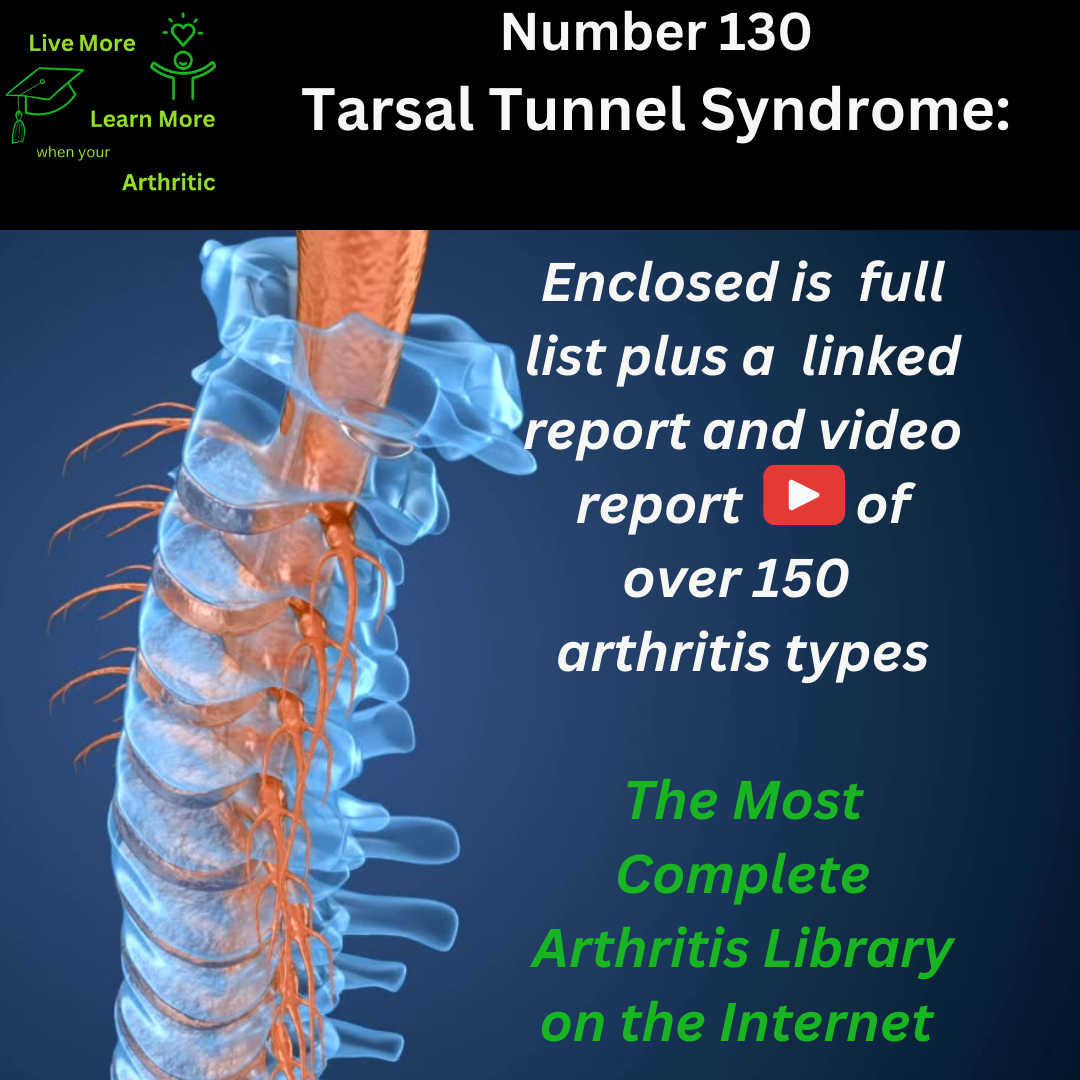
Tarsal Tunnel Syndrome: Number 130 of around 150 types of Arthritis
Understanding Tarsal Tunnel Syndrome
Tarsal Tunnel Syndrome (TTS) is a condition characterized by compression or entrapment of the tibial nerve as it passes through the tarsal tunnel, a narrow space located on the inside of the ankle. This syndrome can lead to pain, numbness, and tingling sensations in the foot and ankle.
 Parts of the Body Most Affected
Parts of the Body Most Affected
In Tarsal Tunnel Syndrome, the tibial nerve is most affected, as it becomes compressed within the tarsal tunnel. This compression can lead to symptoms that radiate into the foot, including the sole, heel, and toes.
Description of the Disease
Tarsal Tunnel Syndrome is caused by pressure on the tibial nerve within the tarsal tunnel. The compression may be due to various factors, such as injury, inflammation, or structural abnormalities within the foot.
Causes and Triggers
Common causes and triggers of Tarsal Tunnel Syndrome include:
- Trauma or injury to the ankle
- Flat feet (pes planus) or fallen arches
- Swelling or inflammation of nearby structures (e.g., tendons, ligaments)
- Systemic conditions like diabetes or arthritis, which can lead to nerve compression
Symptoms and Limited Range of Motion
Symptoms of Tarsal Tunnel Syndrome may include:
- Pain and burning sensation along the inside of the ankle or sole of the foot
- Numbness or tingling in the toes
- Weakness in the foot muscles
- Radiating pain that worsens with activity and improves with rest
- Limited range of motion due to discomfort and nerve involvement
Common Ages of Onset and Risk Factors
Tarsal Tunnel Syndrome often affects adults, typically between the ages of 30 to 60 years. Women are more commonly affected than men, possibly due to differences in foot anatomy and biomechanics.
Complications
Potential complications of Tarsal Tunnel Syndrome include:
- Chronic pain and discomfort
- Muscle weakness and atrophy due to nerve compression
- Difficulty walking or performing daily activities
- Reduced quality of life and mobility if left untreated
Is Tarsal Tunnel Syndrome Autoimmune?
Tarsal Tunnel Syndrome is not considered an autoimmune condition. It is primarily caused by mechanical factors such as compression or irritation of the tibial nerve.
Proactive Approach for Quality of Life
Achieving a higher quality of life with Tarsal Tunnel Syndrome involves:
- Rest and elevation to reduce inflammation and relieve pressure on the nerve
- Orthotic devices or shoe modifications to support the arch and reduce strain on the tibial nerve
- Physical therapy to improve foot biomechanics and strengthen muscles
- Avoiding activities that exacerbate symptoms, such as prolonged standing or walking on hard surfaces
Complications of Tarsal Tunnel Syndrome can include chronic pain, muscle weakness, and difficulty with daily activities. Early intervention and proactive management can help minimize these complications and improve overall function and comfort.
In summary, Tarsal Tunnel Syndrome is a condition characterized by nerve compression in the ankle, leading to pain, numbness, and weakness in the foot. By adopting a proactive approach that includes rest, supportive footwear, physical therapy, and lifestyle modifications, individuals with Tarsal Tunnel Syndrome can achieve a higher quality of life and reduce the risk of complications associated with this condition. Regular follow-up with healthcare providers is essential for effective management and symptom relief.


